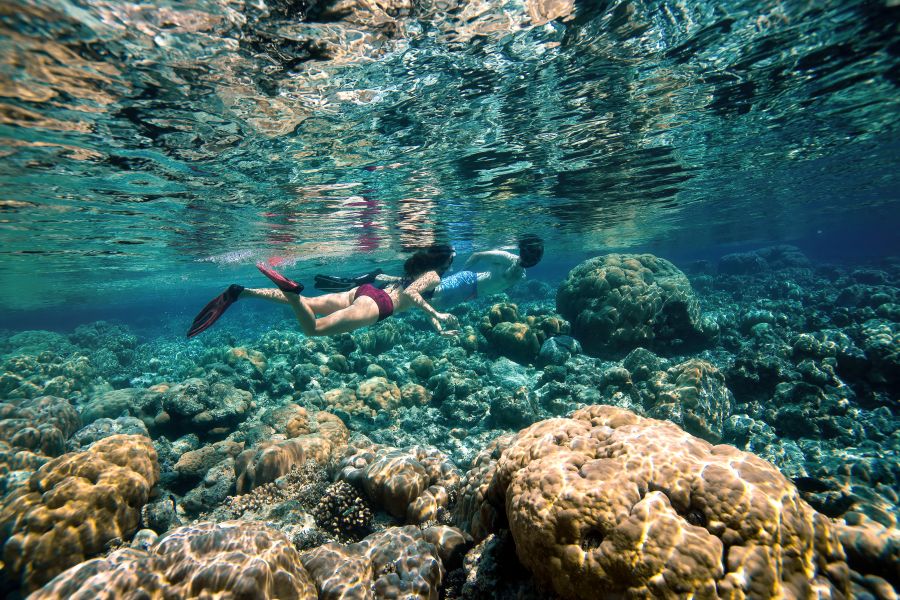Spotted Eagle Rays – The Reef Wanderers
During the past month, Milaidhoo has been visited by a small group of Spotted Eagle Rays. Spotted Eagle Rays are usually seen cruising along the coast and reefs in warm, tropical water around the globe. Some rays enter coral lagoons searching for food or to mate. Like their close relatives, manta rays, they swim constantly and never stop to rest on the seabed.
Spotted Eagle Rays are one of the largest species of ray in the world, with wing-shaped pectoral fins that can reach a width of over three metres. The topside of their body has a deep blue, dark brown or black coloration flecked with white spots and rings, while their underbelly is totally white. These beautiful white spot patterns are unique to each individual, like a fingerprint, and are used by scientists to keep track of eagle ray identities via photo-identification.
Eagle rays have a characteristic head shape with a long and flat snout, which they use to dig up prey buried in the sand. Their diet mainly consists of molluscs, octopuses, crustaceans and small fishes. To defend themselves against predators, they have a long tail with two to six venomous spines. Usually, eagle rays are solitary, but sometimes they form large groups of hundreds. On rare occasions, eagle rays can be seen jumping out of the water.
Recent Posts
















